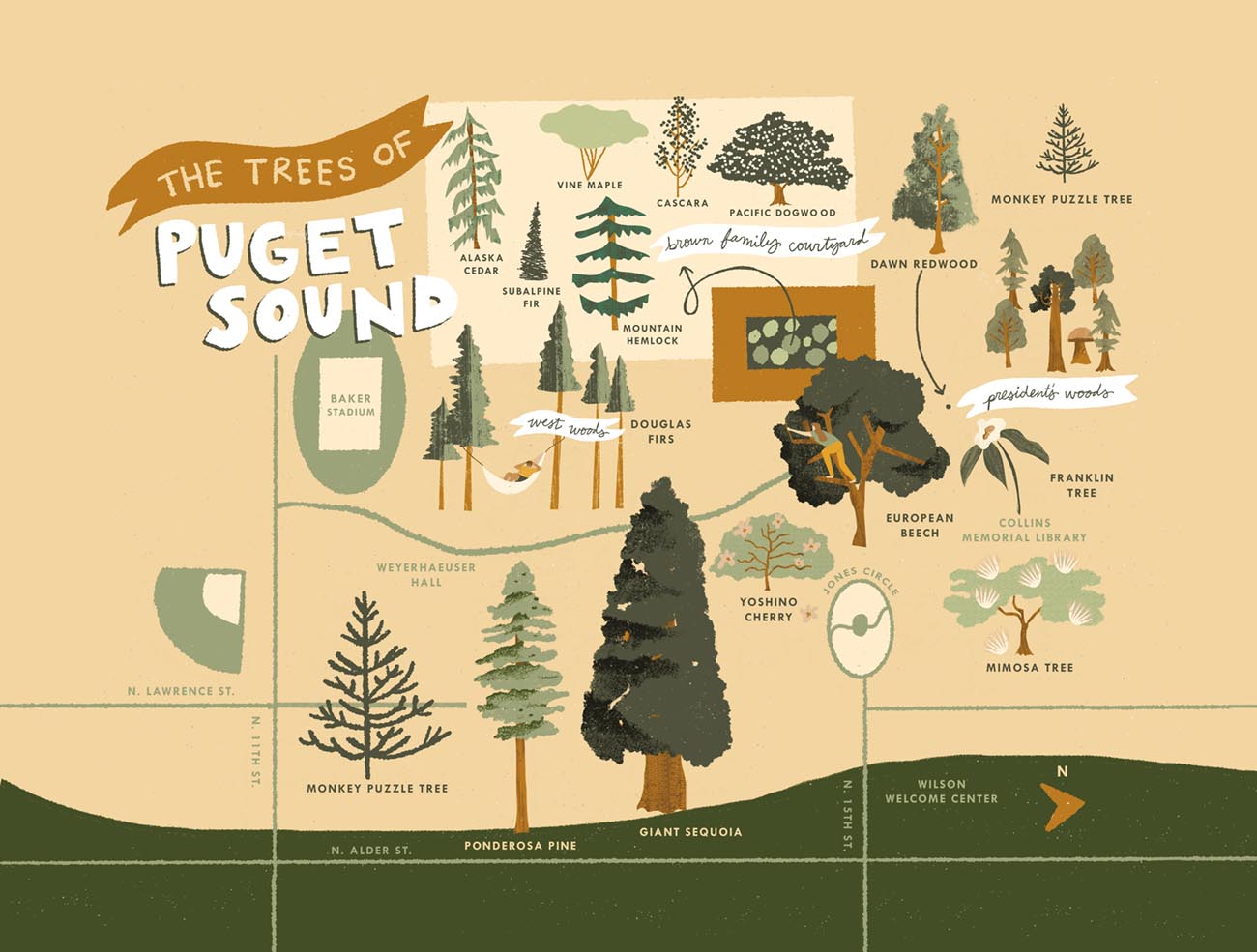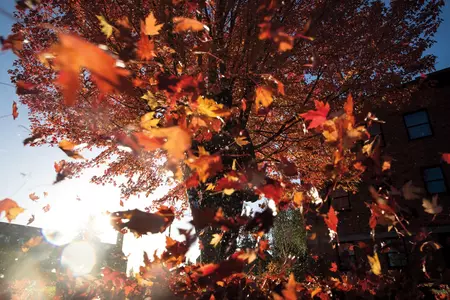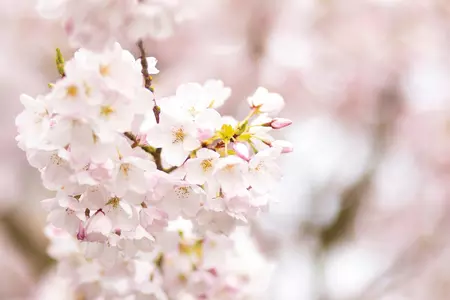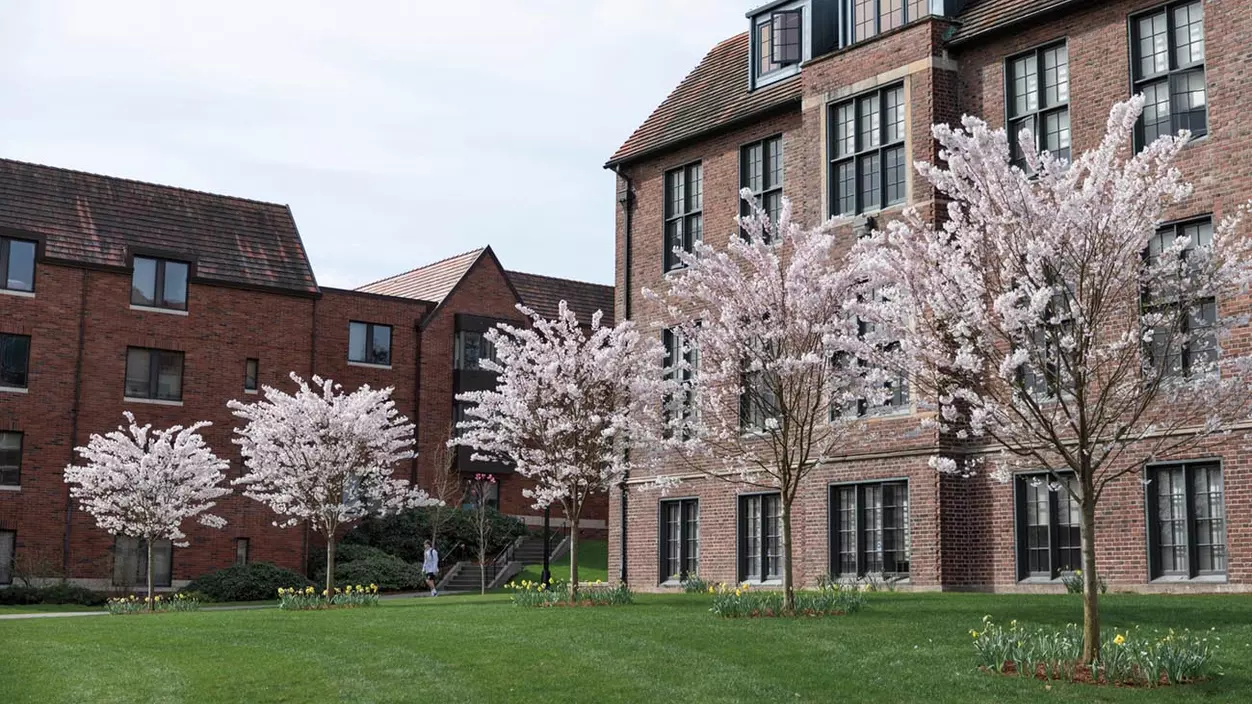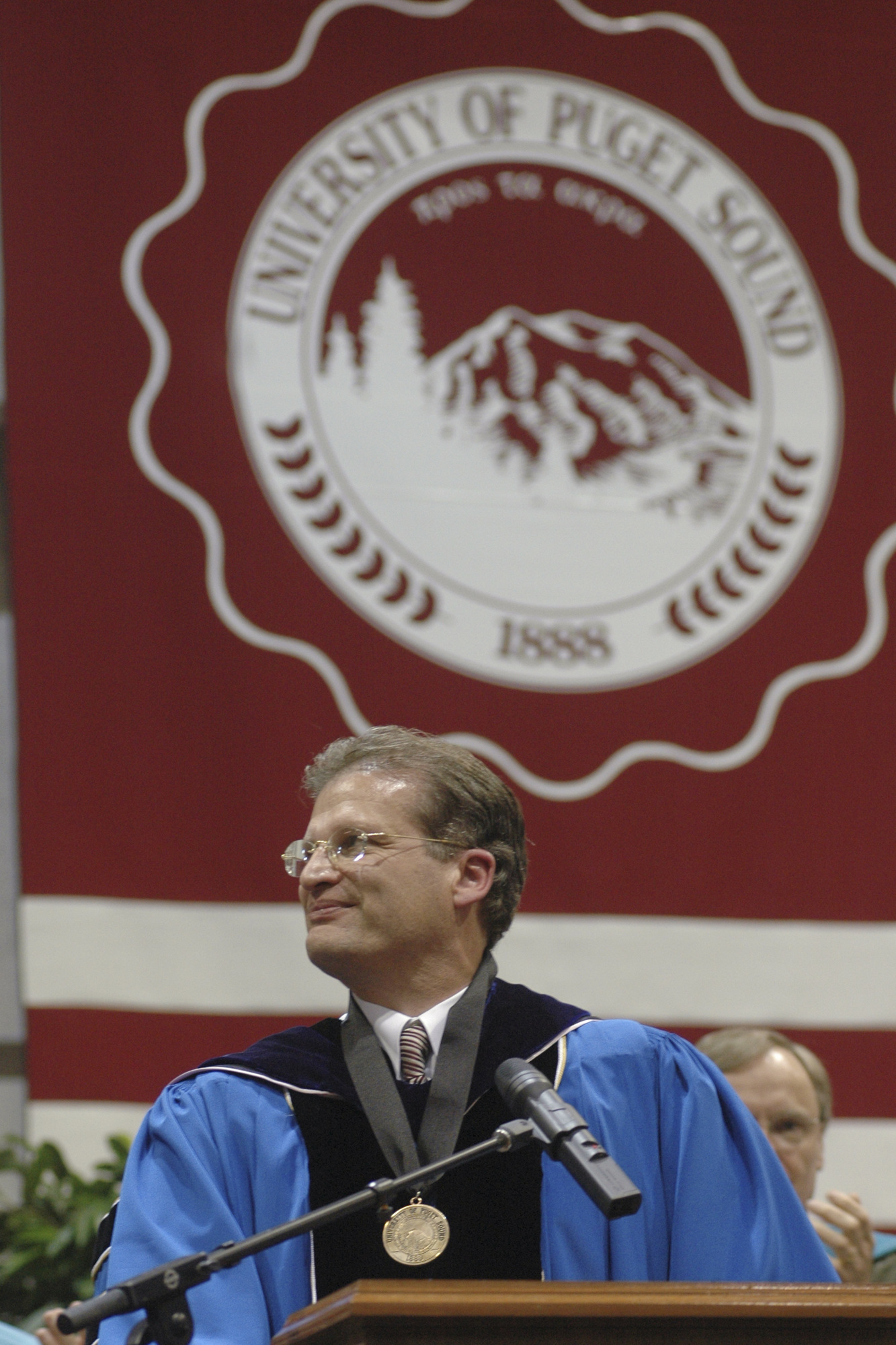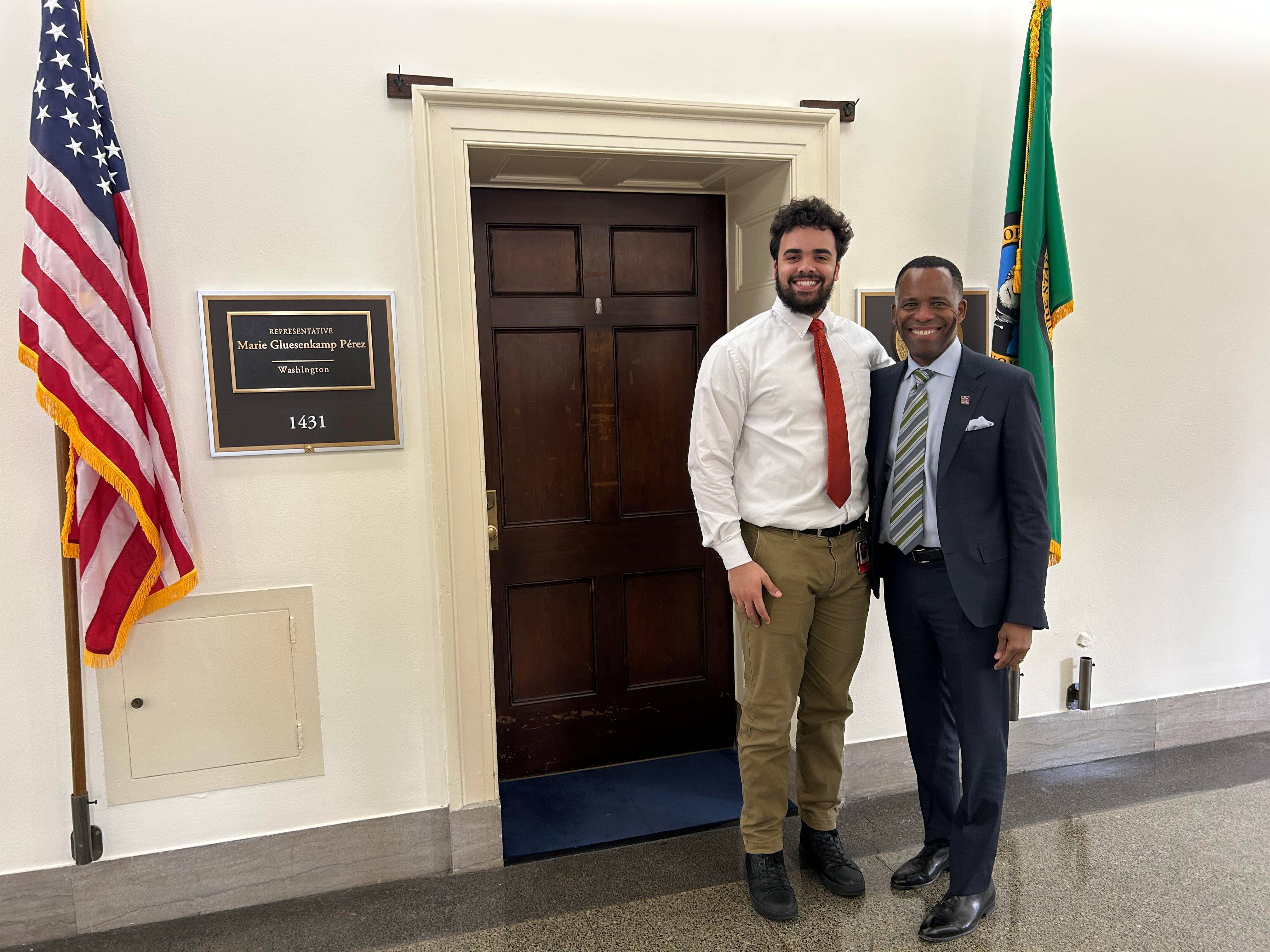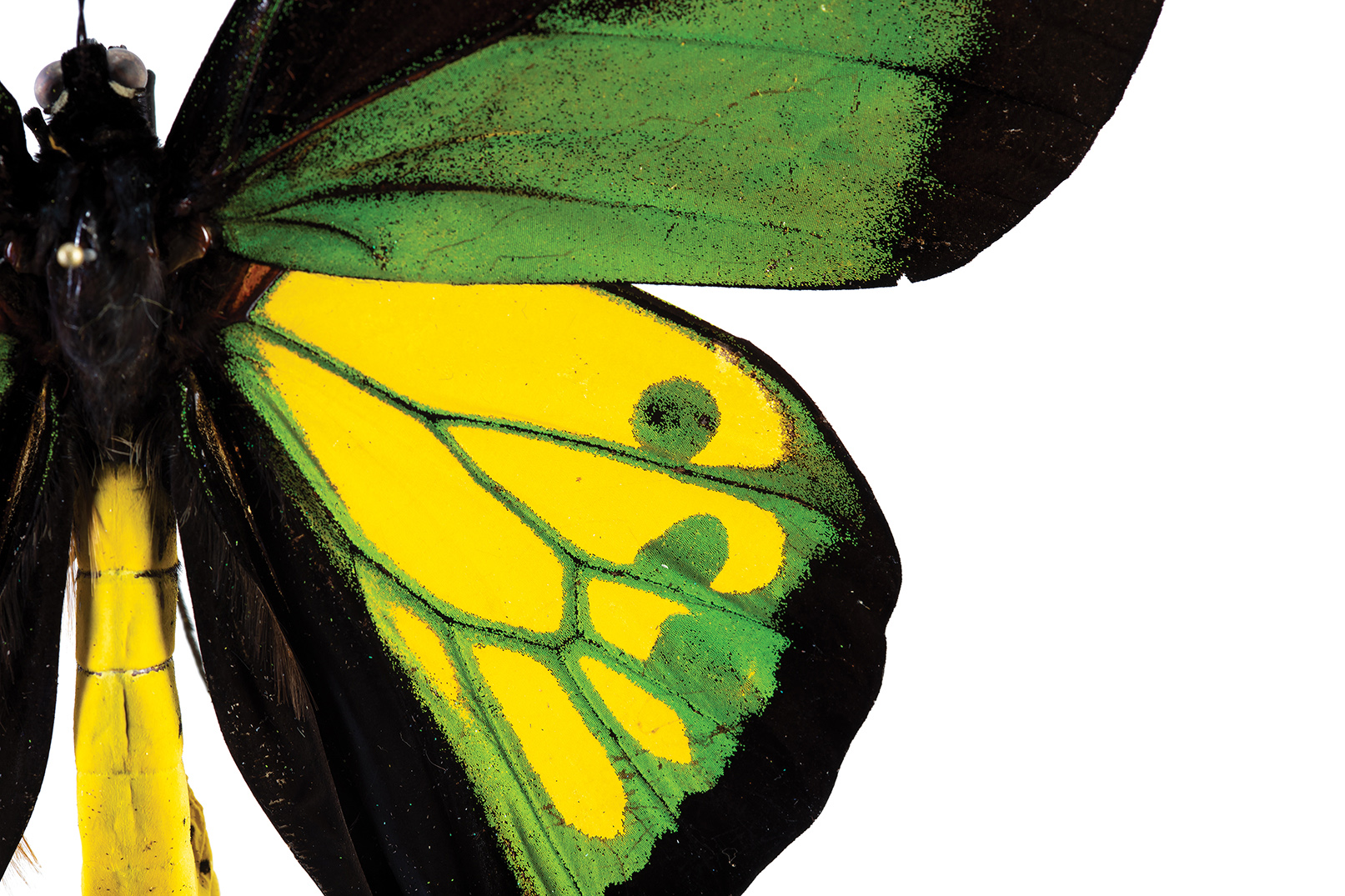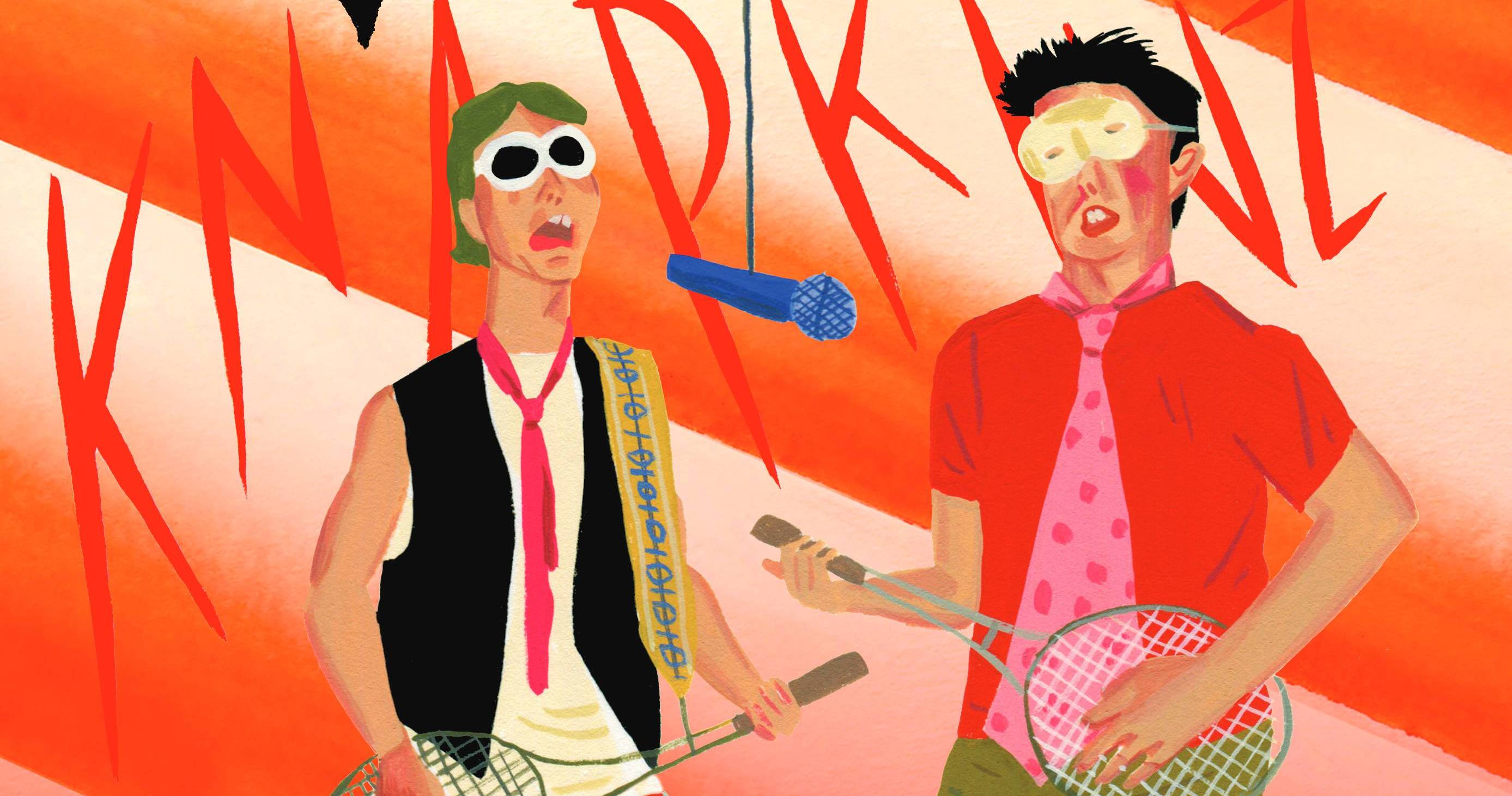There is much that makes the Puget Sound campus special. Smart, enthusiastic students. Dedicated faculty members. A sense of common purpose. There’s something else, as well: trees, more than 1,500 of them, some old and stately, others newly planted with years of growth still ahead of them. In the pages that follow, we celebrate some of the arboreal beauty that makes our campus home so lush and welcoming.
REGAL BEAUTY
HOW DID A GIANT SEQUOIA END UP IN THE MIDDLE OF CAMPUS?
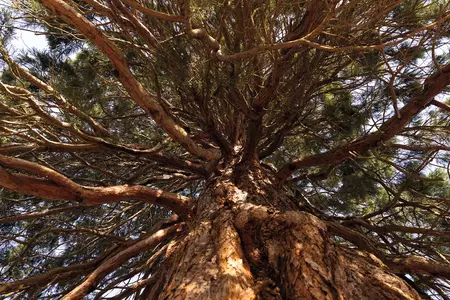
Giant sequoia trees are not exactly native to Tacoma—their natural range today is limited to California’s Sierra Nevada Mountains. But it’s not uncommon for people in the Northwest, the South, and Europe to plant sequoias. In 1932, the Flower Growers’ Club of Tacoma presented the College of Puget Sound with a sequoia that was planted in a small ceremony, with each participant taking a turn with the spade. According to the March 25, 1932, issue of The Trail, “The tree was dedicated to George Washington, the Father of Our Country, and will be left where it is at present unless it becomes too large for the location.”
Needless to say, that sequoia has stayed in the same spot for 90 years now. Over the years, campus groundskeepers have planted a dozen more giant sequoias, including two in the President’s Woods and several north of Wyatt Hall. None, though, is yet as majestic as the one outside Wheelock.
The giant sequoia, or Sequoiadendron giganteum, is considered the world’s most massive tree, but not the tallest. That honor belongs to another member of the redwood family, the Sequoia sempervirens, or the coastal redwood—and campus is home to seven of those. Because cultivated trees don’t grow as tall as those in the wild, none of them is likely to challenge the world record in height held by a coastal redwood in California called Hyperion. That one is 27 stories tall.

